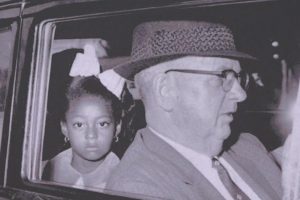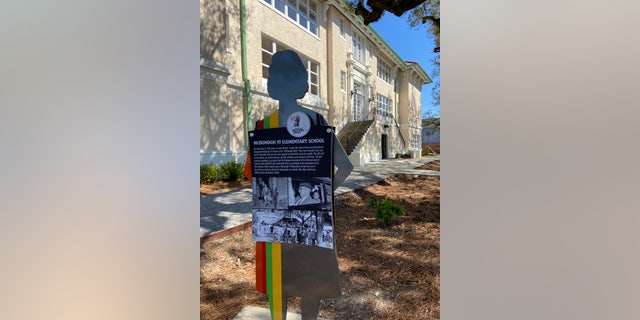'We can begin to heal': New Orleans school added to U.S. Civil Rights Trail

‘We can begin to heal’: New Orleans school added to U.S. Civil Rights Trail
McDonogh 19 Elementary School in New Orleans is one of the newest stops on the U.S. Civil Rights Trail.
NEW ORLEANS – On November 14, 1960, three Black first-graders in white dresses and hair bows were escorted by U.S. marshals into McDonogh 19 Elementary School in New Orleans. At the time, Tessie Prevost, Leona Tate, and Gail Etienne were just 6-years-old and didn’t understand the magnitude of this moment.
They were front-line soldiers of the Civil Rights Movement. Alongside a fourth girl, who was starting at another all-white school in the city on the same day, they would become the first Black students to integrate elementary schools in the Deep South.
Now, over 60 years later historians are honoring their courage.
McDonogh 19 is one of the newest spots on the U.S. Civil Rights Trail.
Today, a Civil Rights trail marker stands outside McDonogh 19 Elementary School, one of the first schools to be desegregated in the south.
“I still remember it,” said Prevost. “They say it was a crowd, but it was a mob out there.”
Walking into school that first day, the girls faced a hateful crowd of people who wanted to keep black students out of white schools.
The girls faced a hateful crowd of parents who wanted to keep black students out of white schools. Courtesy: TEP Center
“I can remember going into the classroom and trying to speak to one of the students that was still there,” Tate said. “It was like I was invisible. She didn’t look my way or even acknowledge that she heard me.”
By late afternoon, Prevost, Tate, and Etienne were the only students left. To keep them safe, all the windows at the school were covered with paper. The girls were also not allowed to play outside. Instead, their recess time was spent playing jacks and other board games under a staircase.
Today, under her foundation, Tate runs the building. It’s now known as the Tate Etienne & Prevost Center (TEP).
The old auditorium will soon be a museum dedicated to the history of public-school desegregation. The old classrooms upstairs have been transformed into affordable housing units for seniors.
The TEP Center has transformed the old classrooms into affordable housing units for seniors.
“I knew I wanted this space to be multi-use,” Tate said. “When I began to realize how many people needed affordable housing, I decided that’s what we would do upstairs. I hope the people who decide to live here will be a part of what we’re doing downstairs.”
Tate and Prevost say they want people to be able to walk the same steps they did all those years ago.
“This can be the beginning for racial cleanliness,” Prevost said. “It will never be swept away; it’s always going to be here, but at least we can begin to heal and hopefully this is a place people can come and understand that.”
“We’ll get people from all over the world to know our story,” Tate said. “We have an important story to share that was here.”
The U.S. Civil Rights Trail currently has over 130 stops across 14 states. In addition to schools, it also features churches, restaurants, courthouses, and more sites that were pivotal to the movement.
Source: Read Full Article




